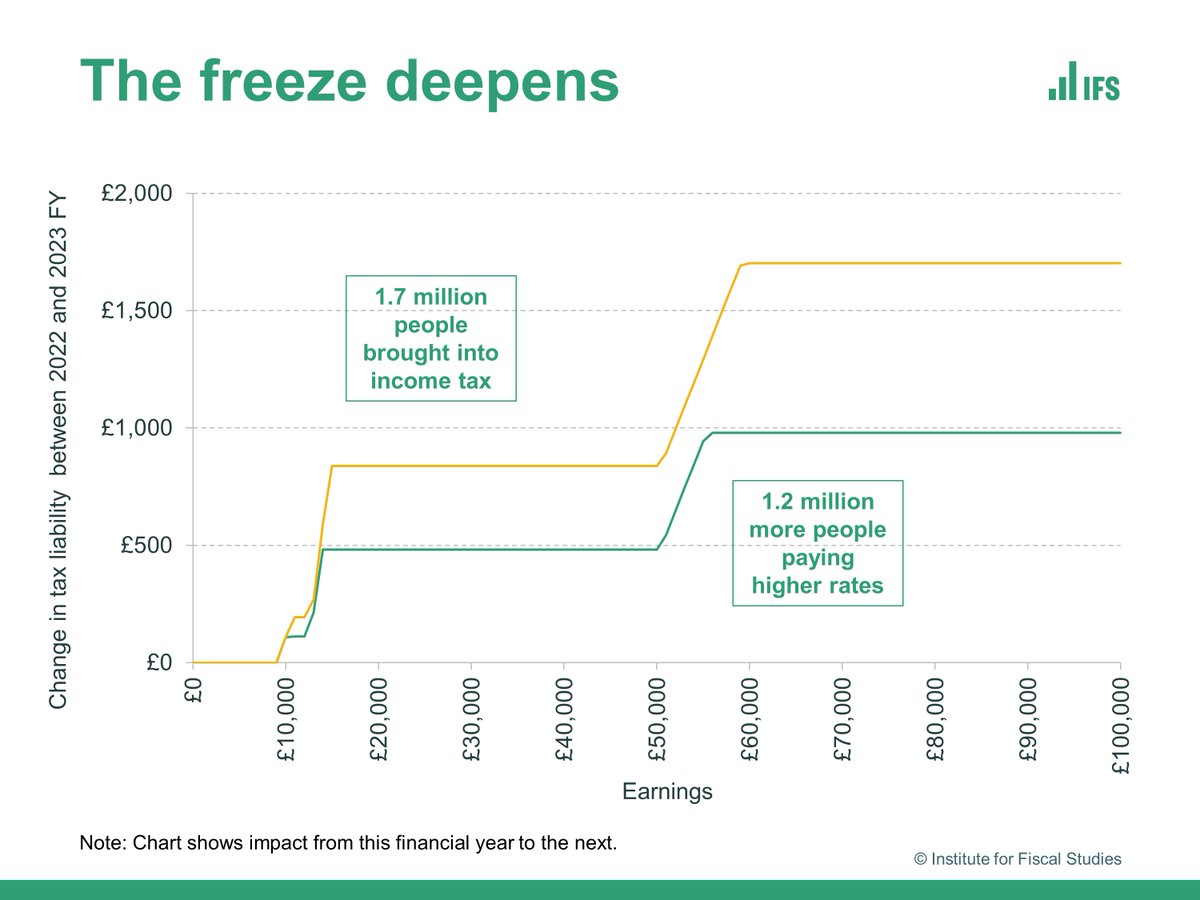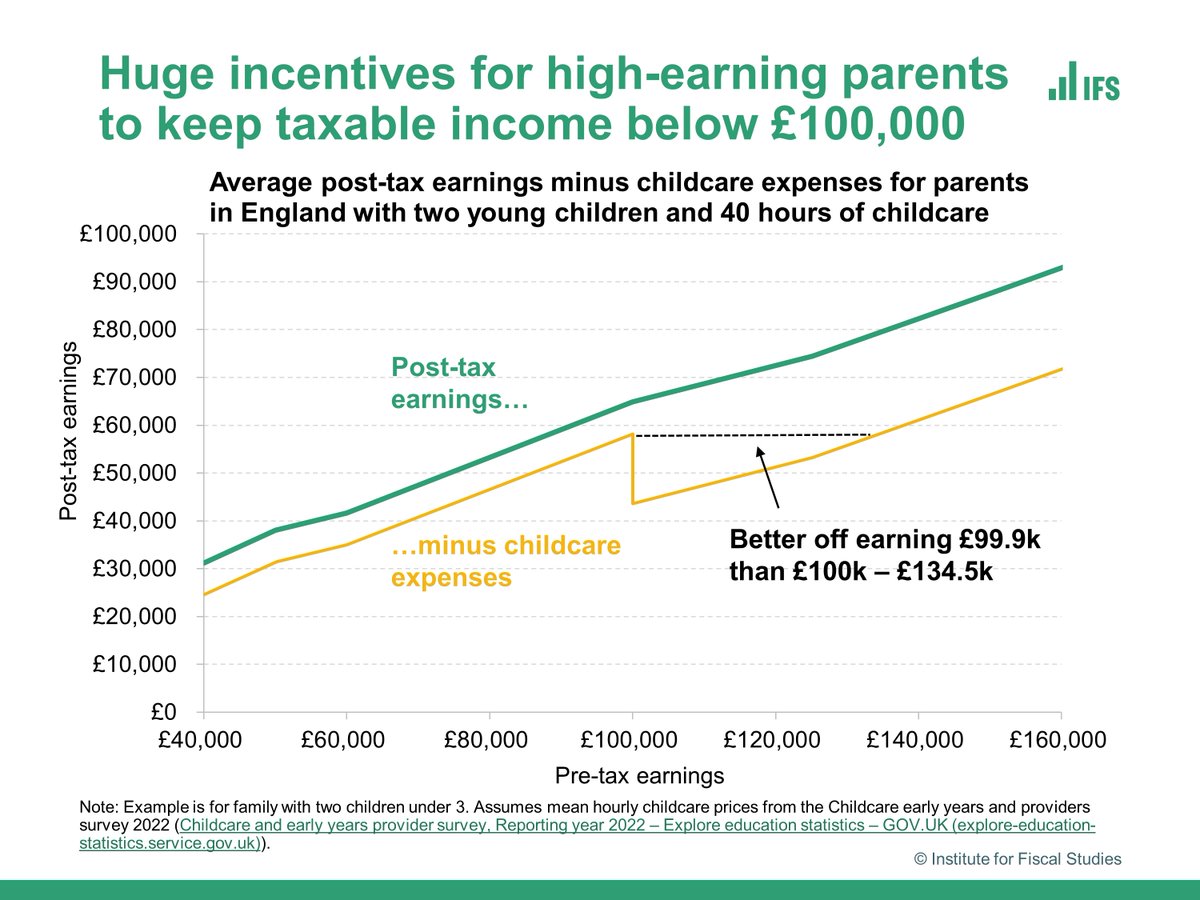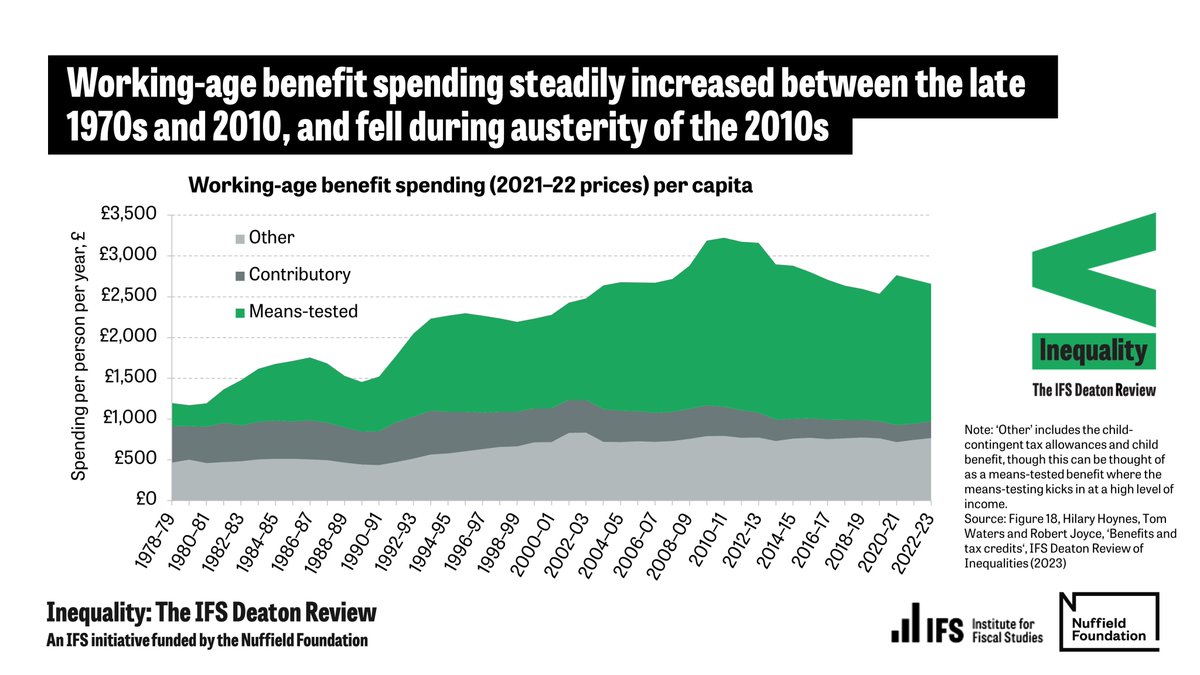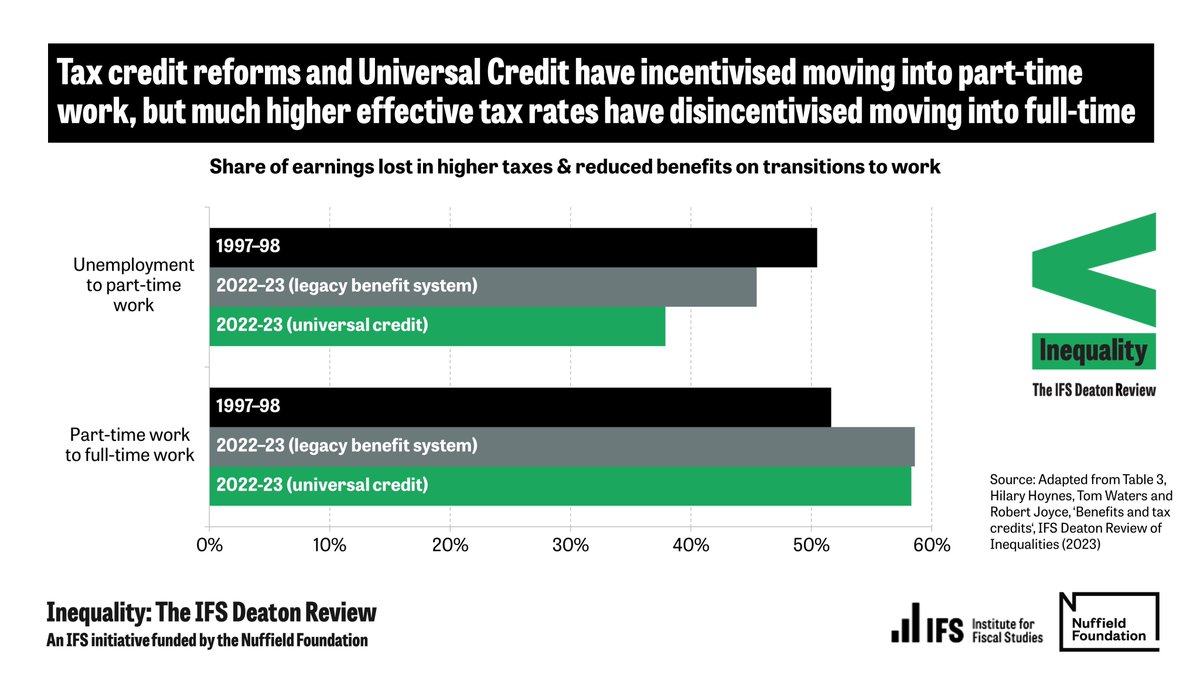
The biggest change to personal tax coming next month wasn't announced yesterday, but is the income and NICs threshold freezes announced last year.
The additional tax burden for most basic-rate taxpayers will be about £500, while for most higher-rate taxpayers it will be £1000.
The additional tax burden for most basic-rate taxpayers will be about £500, while for most higher-rate taxpayers it will be £1000.

Isaac Delestre presents the changes to the lifetime allowance and annual allowance following yesterday's #Budget2023 announcements. 

"If people are looking to save enough for retirement, the ability to save more in a tax advantaged pension might mean they can work less and still reach that goal – for example retiring earlier."
This would be "exactly the opposite of what the Chancellor is hoping for."
This would be "exactly the opposite of what the Chancellor is hoping for."
Isaac Delestre goes through the likely impacts to the changes to pensions tax in our #Budget2023 event.
"There are things to like in these changes, but they do highlight that there are parts of the pension tax system that are badly in need of reform."

"There are things to like in these changes, but they do highlight that there are parts of the pension tax system that are badly in need of reform."

• • •
Missing some Tweet in this thread? You can try to
force a refresh













